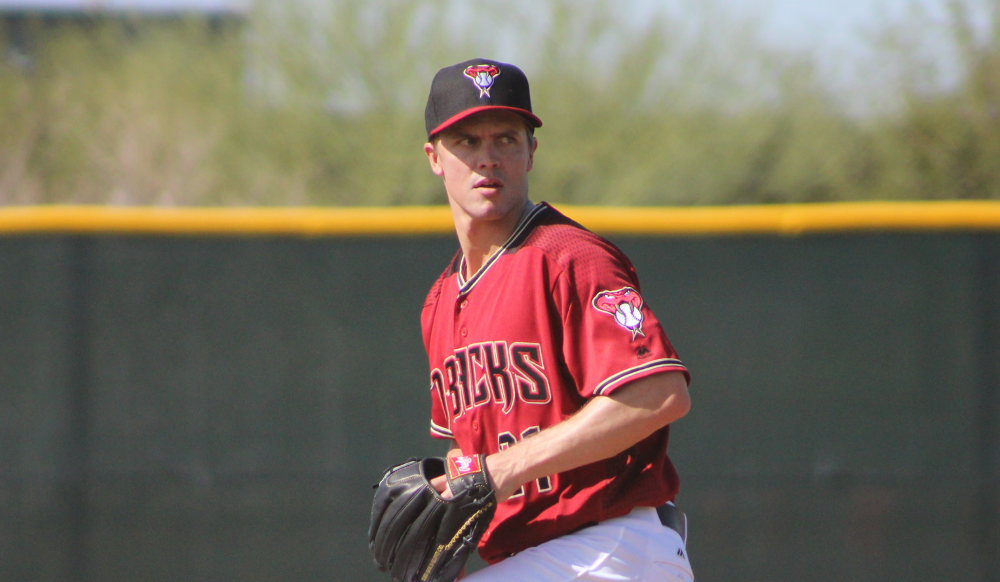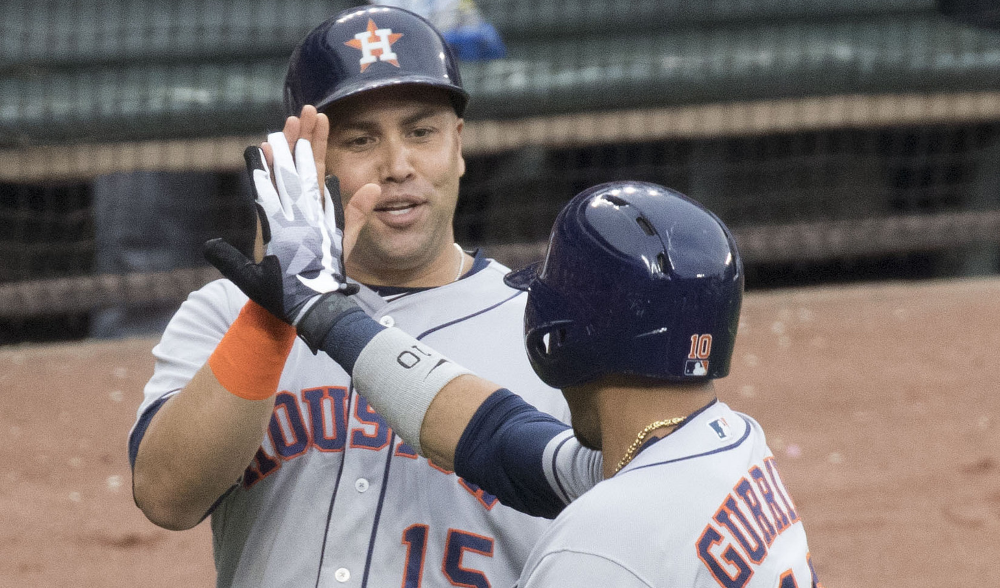Hunter Greene, Rangers Conversion Arms, and More from Instructional League
Periodically, I’ll be posting notes from in-person observations at Fall Instructional League and Arizona Fall League play. Each are essentially the scouting calendar’s dessert course, both in their timing and sometimes dubious value. I take bad fall looks with a large grain of salt as players are sometimes fatigued, disinterested, put in difficult situations purposefully so that they’ll fail, or some combination of these or other bits of important context. With that in mind here are links to past notes followed by this edition’s.
Previously: 9/20 (TEX, SD), 9/21-9/23 (SD, CHW, MIL, TEX).
9/25
Cincinnati hosted Texas in the Reds’ instructional-league opener, and the game featured several pitchers with position-player backgrounds. The headliner was Hunter Greene, who sat 99-101 with a fastball spinning at a rate between 2200 and 2300 over two innings. He used both of his breaking balls quite frequently, first leaning on an inconsistent curveball in the low 80s and, later on, an upper-80s slider. The curveball flashed above average but its depth and bite varied. Greene’s slider was short and fringey, though he threw both breakers for strikes multiple times. His fastball command was less consistent, however, and Greene was hit hard (twice quite literally, by two second-inning comebackers), surrendering six runs.
Greene was followed by righty Wyatt Strahan, a 24-year-old reliever who hasn’t gotten out of A-ball yet, mostly due to injury. He was up to 96 on Monday with a plus slider and violent delivery. If he can stay healthy, he’s a potential bullpen contributor.
Among those on the mound for Texas were former position players James Jones and Jairo Beras. Jones was a two-way player on his high-school team in Brooklyn and again at Long Island University. The Mariners drafted him in the 2009 draft’s fourth round and he made the majors as a speed-first outfielder in 2014, stealing 27 bases in 28 attempts that year. Sent to Texas as part of the 2015 Leonys Martin trade, Jones continued toiling away at Triple-A through much of 2016 without offensive success and began to transition to pitching late last year. He blew out after a few pitching appearances late in 2016 and needed Tommy John surgery.
Jones is now back on the mound and pitching with interesting stuff, sitting 92-94 with a bit of late wiggle and a fringey curveball and changeup. His lower arm slot allows right-handed hitters to see the ball early and they have teed off on Jones in two looks I’ve had at him this fall.
Though it may not be Jones himself, this is what I think a realistic two-way player looks like, someone who can competently play a niche role on both sides of the ball. In Jones’ case, that means getting lefties out as a bullpen arm while also acting as a defensive replacement and pinch-runner. The chances of such a creature existing at all would be aided by roster expansion, something December’s CBA negotiations nearly yielded.
Beras sat 94-96 with an average slider. He isn’t as athletic as Jones but throws hard and is new to pitching. Both conversion arms are longshots but have major-league-caliber arms that need late-career refinement.
9/26
Tuesday, the Dodgers and White Sox had simultaneous home instructional-league games at Camelback Ranch for the only time this fall. Their fields are close enough to one another that one can stroll back and forth between games. I began on the Dodgers’ side, where they took on Cincinnati.
Reds third-rounder Jacob Heatherly sat 90-92 and commanded that pitch as well as his average curveball and changeup. He lacks any physical projection and, except for perhaps a bit of breaking-ball and changeup progression from pro reps and instruction, the cement is largely dry on his stuff. Realistically, Heatherly projects as a No. 4 or 5 starter, but his ceiling will be dictated by the level of command he’s able to develop. He’s advanced in that regard and could move quickly. Heatherly, who turned 19 in May, signed for $1 million.
SS Jeter Downs, the Reds’ comp-round pick from June, has also been impressive. Downs sprays hard contact to all fields and has shown enough arm strength to stay on the left side of the infield. I’ve yet to see his range and athleticism challenged, but what I’ve seen is pretty good.
Dodgers 17-year-old LHP Robinson Ortiz was 90-93 with bat-missing life and feel for a breaking ball that flashed above average. He’s listed at 6-foot-4 on the instructional-league roster but he’s closer to an even 6-foot. Though short, Ortiz is well built and has a strong, voluptuous lower half. His arm action is a bit long, but I generally like his delivery and athleticism enough to project him as a starter. Well-built 17-year-olds with good fastballs and breaking-ball feel are typically being talked about as top-50 draft picks, even if they’re a little short.
Want more height/weight fun? RHP Alfredo Tavarez was listed at 6-foot-5, 190 this year but is listed close to 250 on the instructional-league roster and he’s every bit of that. He put up big numbers in the AZL, striking out 47 hitters in 30 innings, but only sits in the upper 80s with his fastball. Tavarez does have a potential plus breaking ball but will need to drastically improve his command if he’s to survive with this kind of velocity.
On the White Sox side, Chicago first-round 3B Jake Burger had issues with throwing accuracy but took good at-bats and made some loud contact. I remain skeptical of his chances of staying at third base but do think he’ll hit. I recorded multiple below-average pop times from C Zack Collins, all in the 2.05-2.10 range. Like Burger, though, he takes great at-bats, rarely offering at pitches off the plate and showing easy pull power.



